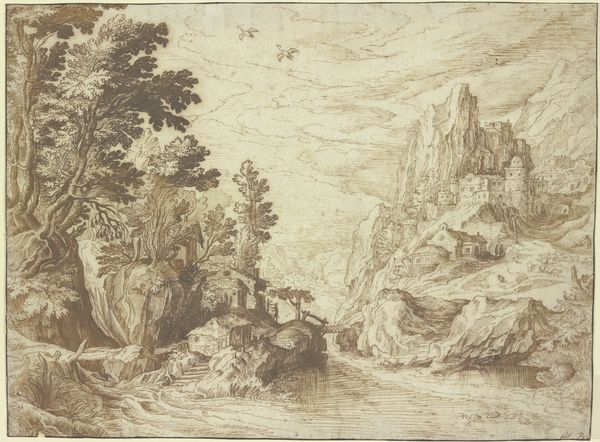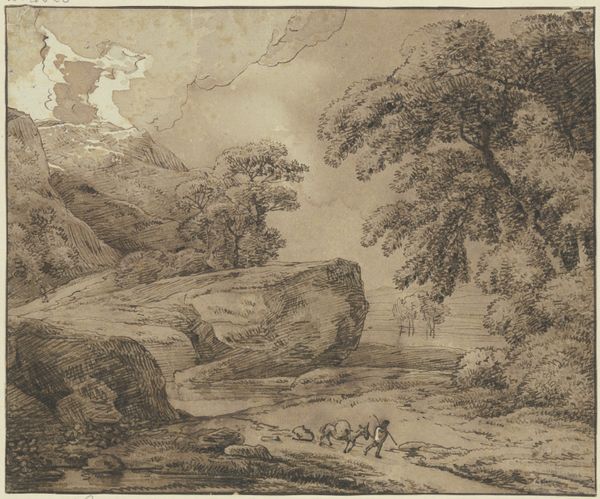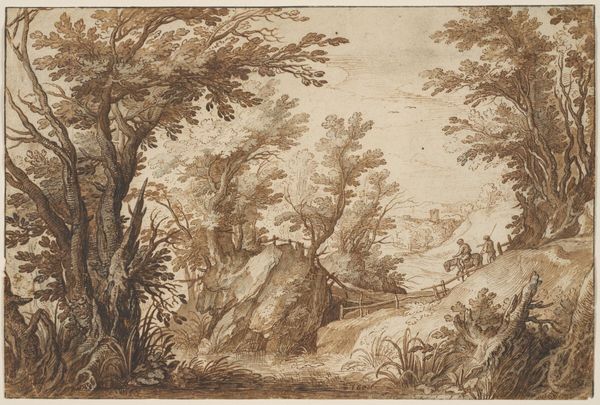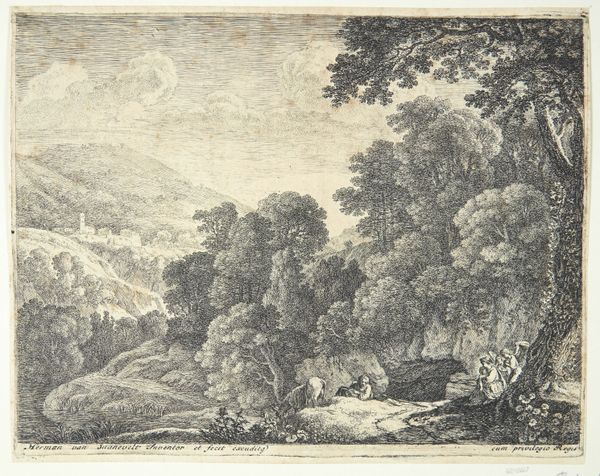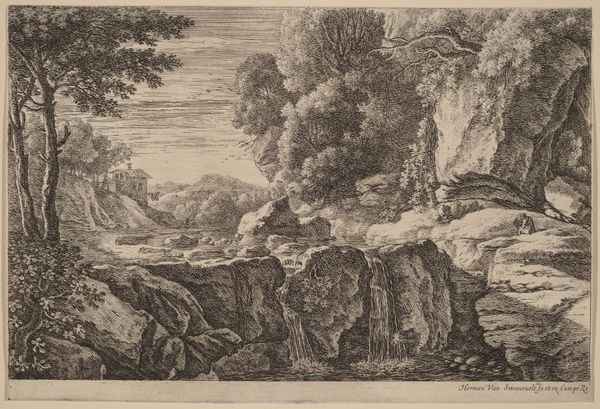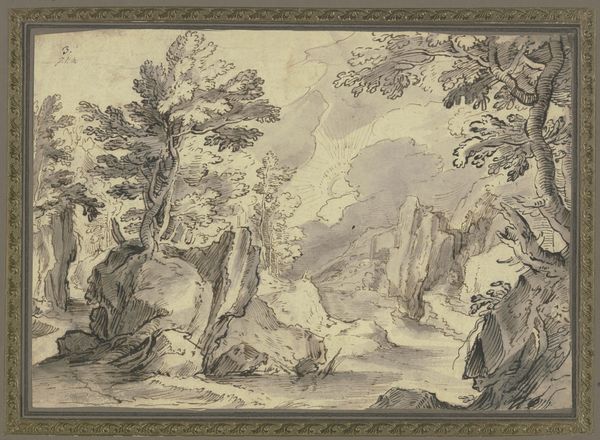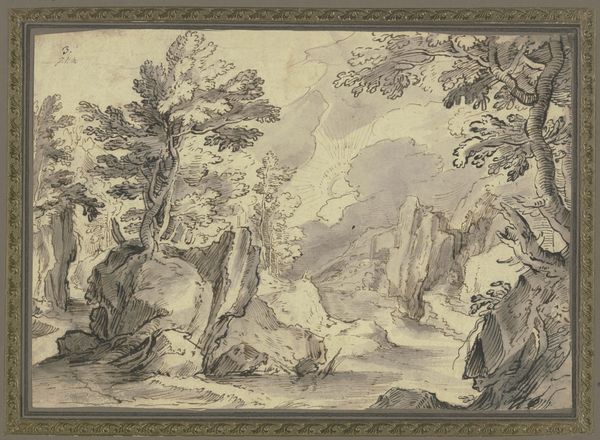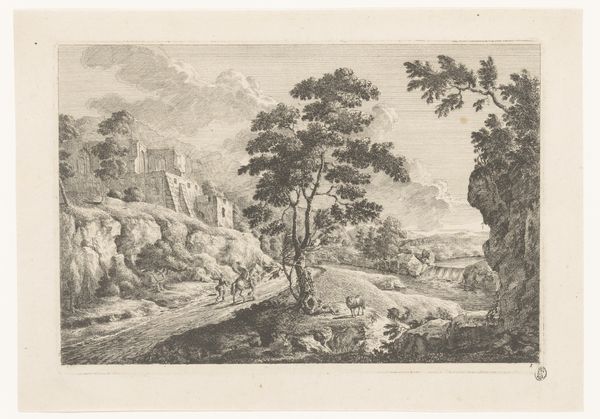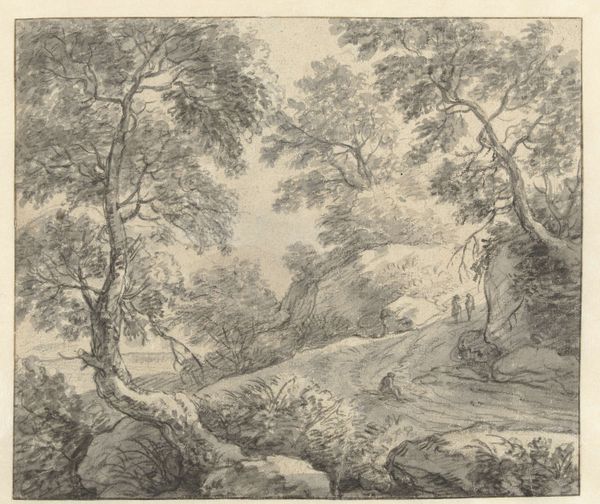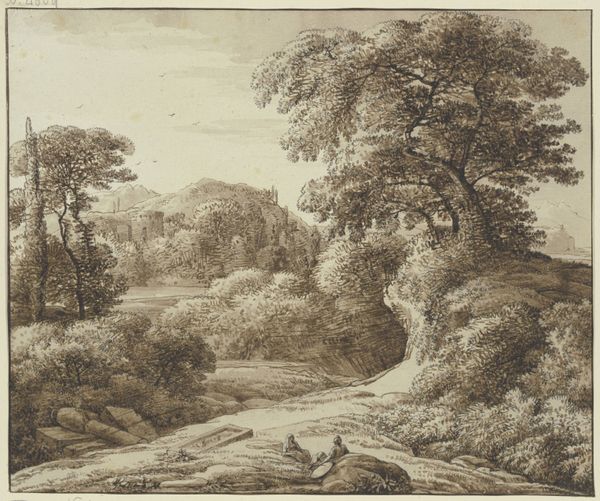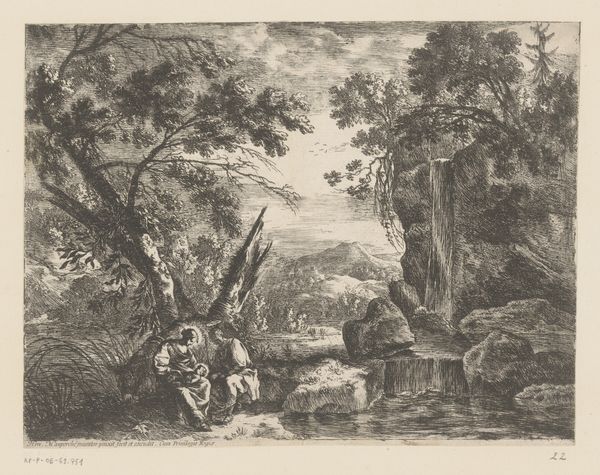
drawing, etching, paper, ink
#
drawing
#
baroque
#
etching
#
landscape
#
paper
#
ink
#
pencil drawing
Copyright: Public Domain
Editor: This drawing, "Waterfall, with three anglers in the foreground" by Isaac de Moucheron, created using ink and etching on paper, has a really calming, almost idyllic quality. What do you see in this piece, particularly concerning its historical context? Curator: I see more than just a tranquil scene. Consider the Baroque period during which this piece emerged. Landscapes like these weren't just about pretty scenery; they were often about power and ownership. The depiction of nature, carefully controlled and viewed, reflected the social hierarchy. Those anglers, seemingly at leisure, are subtly placed within a larger narrative of dominion over the natural world. How might we unpack this representation in terms of environmental consciousness today? Editor: So, the anglers aren't just figures in the landscape; they represent something larger? Curator: Precisely. Their presence is not passive. It's an assertion of control, echoing the broader colonial and economic expansions of the time. We can examine how representations like these helped to naturalize certain power dynamics, making them appear as part of the landscape itself. Consider the ways in which access to nature was—and still is— mediated by class and race. What do you think about this conscious claiming of nature by people? Editor: That gives me a lot to consider about how we view landscape art. Thanks, it’s interesting to think of it reflecting more about social hierarchies than pure scenery. Curator: Indeed, art serves as a mirror to society, reflecting its values, its power structures, and, perhaps most importantly, its inequalities. Understanding this enriches our experience.
Comments
No comments
Be the first to comment and join the conversation on the ultimate creative platform.
